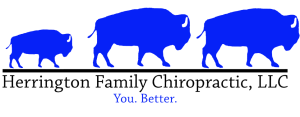What is Arthritis?
Arthritis is the active inflammation of a joint. “Arthro” meaning joint, “itis” meaning inflammation. The inactive process, or condition is known as “arthrosis”.
Arthritis is a complicated condition that spans many different types and many different causes. The most general, osteoarthritis (OA), will be discussed here. Keep in mind, “osteo” means bone. Osteoarthritis is most commonly understood when a patient feels “bone on bone” grinding in a joint, and has a very tell-tale deep “bone ache” from said joint. This state is the latest stage of OA. Osteoarthritis begins with repetitive stress damage to the ends of the bone that can result in irreparable damage to the cartilaginous end to the joint.
How does Osteoarthritis (OA) start?
Every surface of a bone, within a joint, is covered in a special type of cartilage known as hyaline cartilage. This gives the end of the bone a very slippery, extremely smooth presentation, allowing the end of the bone to easily slide past the other as the joint moves through its range of motion. Without this layer, the bones would rub together like two pieces of chalk. Beyond the hyaline cartilage end plate, the joint itself is filled with the most slippery fluid known to man. This fluid is called “synovial fluid”. This fluids consistency gives the joint ends an even more slippery environment to slide past each other.
When damage to the joint occurs, typically there is small amounts of damage that occur to the cartilage in the joint. The joint ends will heal from this damage, but they heal very slowly. The cartilage on the ends of the bones have no blood flow, so nutrients used to heal the injury must be brought in from within the bone, or from within the synovial fluid. This process is very slow. Instead of healing in days, like skin does, this process may take weeks or months.
What does this all mean for me?
When repetitive strain injuries occur, they are typically not very damaging (like breaking a bone or tearing a muscle) but they cause so many minor injuries over time, that the tissue that is being damaged cannot heal in time and the injuries compound. Eventually this leads to the breakdown of the hyaline cartilage and the thickening of the synovial fluid.
Thickening of the synovial fluid makes the joint harder to move and nutrients harder to obtain. As the cartilage breaks down the bone ends contact each other without the cartilage as a buffer, and thus the bone begins to become damaged. Due to this damage inflammation begins.
Arthritis is a very slow process that typically can take 5-10 years to develop due to repetitive strain. At any point in that process, if the strain is limited or removed, the arthritic damage may stop all together, and joint can return to normal.
Are there other kinds of arthritis beyond Osteoarthritis?
Yes. other types of arthritis, such as psoriatic, rheumatoid, syphilitic and gouty all share the same commonality of joint damage and pain. The origin of the damage is quite substantially different for each type. If any of these conditions are suspected, follow up with your Primary Care Physician (PCP) as most of them can be confirmed via blood tests.
What can chiropractic do for Arthritis?
While I greatly recommend every patient educate themselves on their conditions, consulting a doctor about your diagnosis (or to obtain a diagnosis) is very important. Knowing what type of arthritis you have, is imperative for proper treatment and maintenance.
In terms of Osteoarthritis, if the damage is treated early, it is possible to slow or stop the degradation of the cartilage. This can be done by correcting muscular strain, restoring proper motion to the joint, then with rehabilitory training, restoring stability to the joint and surrounding musculature. This path can effectively stop and prevent arthritis from returning.
If OA has progressed to a moderate point with mild boney irritation, the symptoms can be reduced, but it is unlikely that the cartilage will heal. Treatments available at this point included treating the joint restrictions, the muscular strain as well as restoring proper joint motion in as much range of motion as is able. With possible boney inflammation, full range of motion may not be possible.
If the OA is severe, the joint can be improved with careful adjusting and muscular release, but full range of motion is highly unlikely to be restored, and the damage to the bones within the joint may slow. Depending on the degree of severity, an orthopedic consultation may be warranted to determine surgical candidacy. If a surgical route is not necessary or desired, the region can be mildly improved and maintained with regular chiropractic care, but resolution is unlikely.
